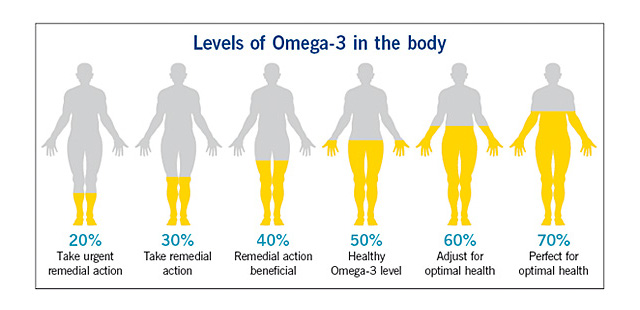I often see patients who assume that forgetfulness, dry skin, impaired memory and other symptoms are just part of getting older. They’re surprised when I suggest that the lack of essential fatty acids may be at the root of their problems. Most of my patients have heard of essential fatty acids, but many of them don’t know what they are or why they are important.
Fatty acids make up the food group we normally call fats. Essential fatty acids are those you must get from your diet. They are necessary for life but cannot be made by your body. EFA’s are the polyunsaturated fats-the good fats-and there are two groups of them, omega-3’s and omega-6’s. (The names refer to the chemical structures of the molecules.)
Your body uses EFA’s to rebuild cells and produce new cells; every cell in your body depends on these good fats. EFA’s also aid in the production of hormone-like substances called prostaglandins, which regulate many bodily processes such as heart rate, blood pressure, inflammation, and fighting infection.
A fatty acid deficiency may lead to some of the most common problems of getting older. Eczema, thickened patches of skin, cracked heels, dry hair, dandruff, fatigue, dry eyes, depression, or memory loss may indicate the need to boost your intake of EFA’s. Because the brain has a high concentration of fatty acids, a deficiency may even lead to Alzheimer’s disease.
When I see a patient with a set of seemingly unrelated symptoms such as these, I always consider omega-3 supplementation. Why omega-3 and not omega-6?
Get the Right Ratios
You need both omega-3 and omega-6 fatty acids. However, consuming an excess of omega-6’s plays havoc with your health. The ideal ratio of omega 6’s to omega-3’s is 4:1 or less. This means that for every four molecules of omega-6 fatty acids consumed, you should consume at least one omega-3. Some experts recommend a 1:1 ratio.
Unfortunately, the typical American diet contains way too many omega-6’s, leaving many Americans deficient in omega-3 fatty acids. Because of the abundance of omega-6’s in vegetable oils such as corn, soy, and safflower, most people need to focus on decreasing these types of fats while increasing the omega-3’s.
Not only can increasing your omega-3’s help clear up a number of issues, but supplements have also been shown to improve more serious conditions such as heart disease and rheumatoid arthritis. Because the fatty acids in fish oils help artery walls maintain elasticity, a supplement can prevent blood clots and stroke. Other research has shown that omega-3’s may also reduce the growth of tumors in breast cancer as well as lower the risk of developing breast and colon cancer.
Sources of Omega-3
Omega-3 fatty acids come in three varieties. ALA is found primarily in plant sources, including flaxseed
meal, flaxseed oil, pumpkin seeds, hempseeds, walnuts, and walnut oil. EPA and DHA benefit your body the most. Best sources include fatty cold-water fish, such as salmon, sardines and albacore tuna. A healthy body can convert sufficient amounts of ALA into EPA and DHA, but it is best to consume a combination of these fats.
7 Easy Ways to Balance The Fats
– Eat more fish–twice a week is recommended. Some people prefer to take fish oil supplements. Taking EPA and DHA in a concentrated form can lower your risk considerably for cardiovascular disease.
– Instead of chips for a snack, eat a handful of nuts or seeds. Walnuts taste great mixed in with a cup of yogurt, and pumpkin seeds add an interesting twist to a green salad. Also remember, since heat destroys fatty acids, choose raw over roasted.
– Avoid all hydrogenated fats (trans-fatty acids), which are detrimental to your health. Instead of margarine, choose olive oil and salt or organic butter. For salad dressing, mix olive oil with sea salt and a little lemon juice.
– Sprinkle flaxseed meal into smoothies, and on top of cereal or yogurt. You can also add it into a variety of healthy baked goods, such as pancakes, muffins or loaf bread.
– Make your own trail mix with a variety of nuts, seeds, and dried fruits.
– Eat more grass-fed beef. These cattle eat leafy greens rich in omega-3 fatty acids, while conventionally-raised cattle are fed grain, devoid of healthy fats.
– Decrease intake of the most used cooking oils (corn, canola, soy, safflower and sunflower). When possible, choose alternatives such as extra virgin olive oil, coconut oil and organic butter in limited amounts.
– Don’t assume that your symptoms are just a natural part of the aging process. Consider your EFA’s first. Start eating to balance the fats in your diet, and ask your doctor to help you decide if you need supplementation.
Source Taken:
Article Source: https://EzineArticles.com/expert/Mark_Rosenberg,_M.D./101276
